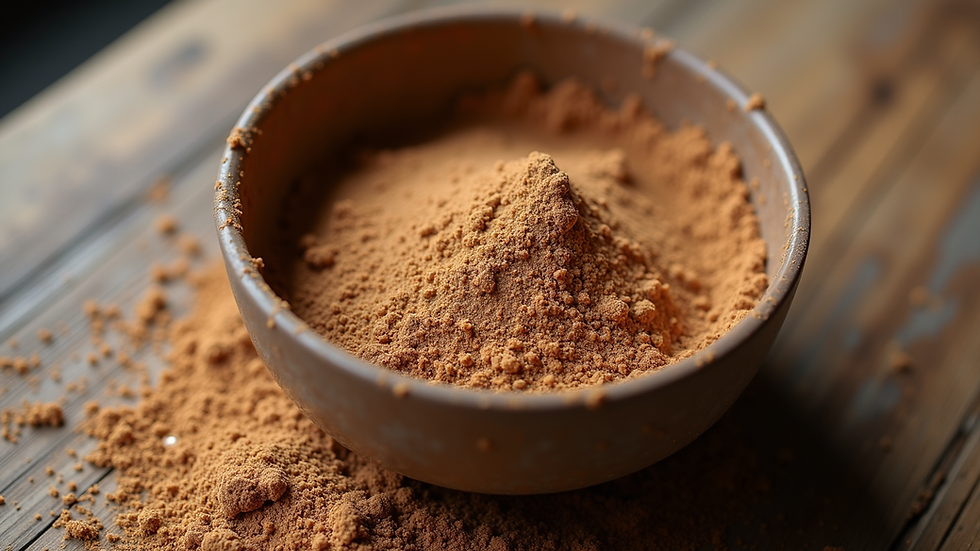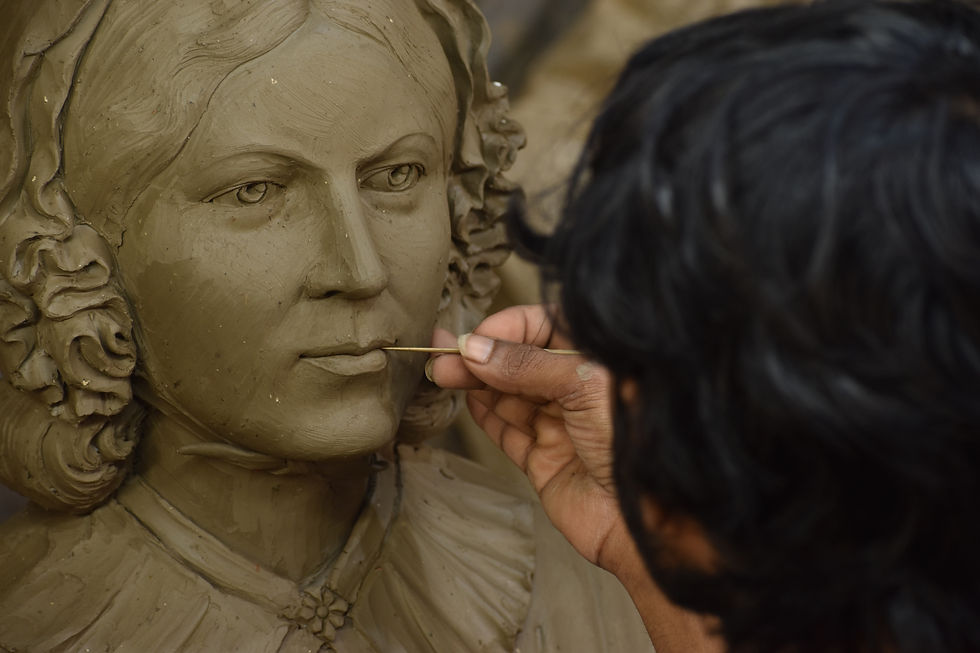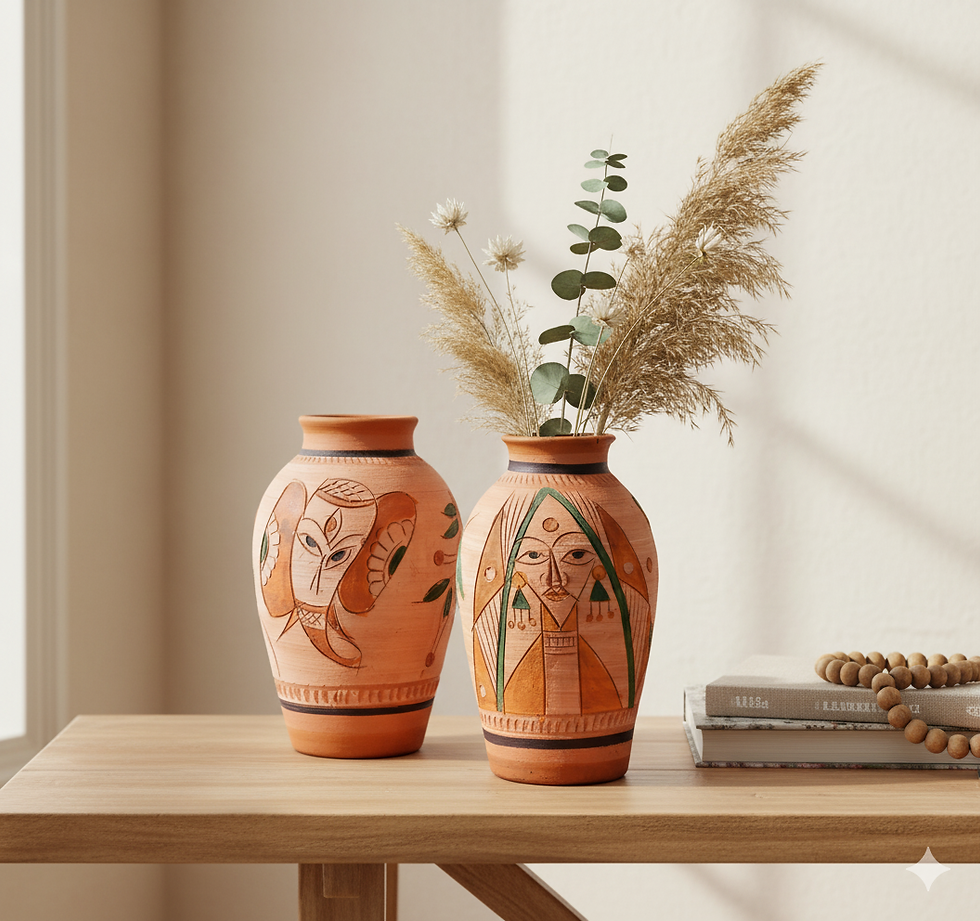The Art and Craftsmanship Behind Clay Sculptures
- Jul 18
- 4 min read
Clay sculptures have captivated audiences for centuries. From ancient civilizations to modern artist studios, the tactile and versatile medium of clay allows artists to express their creativity in unique ways. This blog post explores the artistry and craftsmanship behind clay sculptures, diving deep into the techniques, approaches, and the impact of clay as a medium.
The Diverse World of Clay Sculptures
Clay sculptures come in various styles and forms. They can be realistic, abstract, or whimsical. The choice of style often depends on the artist’s vision and intent. For example, an artist may choose to create realistic sculptures that closely resemble human figures or animals, while another may opt for abstract forms that convey ideas or emotions through shape and texture.
Statistics show that clay modeling accounts for a significant portion of the sculpture market. A report by the National Endowment for the Arts revealed that 10% of artists identify as sculptors, many of whom work with clay. This highlights the popularity of clay as a medium and speaks to the artisanship involved.

Techniques Used in Clay Sculpturing
Understanding the techniques used in clay sculpturing is essential for both novice and experienced artists. There are many methods, each with its strengths and weaknesses:
Hand Building: This is a fundamental technique where artists shape clay by hand without the use of a wheel. Techniques such as pinching, coiling, and slab-building allow for creative freedom.
Wheel Throwing: Pottery wheels are used for shaping clay. This technique often results in symmetrical forms and is popular for creating functional pieces as well as artistic sculptures.
Sculpting and Carving: Artists often use tools to carve or sculpt details into the clay. This approach allows for intricate patterns and textures.
Glazing and Firing: After sculpting, pieces must be dried and fired in a kiln to harden them. Glazing adds color and a protective layer to the surface.
Each of these techniques requires practice and skill. Many artists start with simple projects and gradually explore more complex designs as they gain experience.

How to Make Homemade Clay for Sculptures?
Creating homemade clay can be an exciting project, whether for beginners looking to explore clay sculpting or for experienced artists seeking a custom texture. Here’s a simple recipe to create your own air-dry clay:
Ingredients:
1 cup flour
1 cup baking soda
1/2 cup water
Instructions:
In a mixing bowl, combine the flour and baking soda.
Gradually add water, mixing until you achieve a dough-like consistency.
Knead the mixture for about 5 minutes until smooth.
Shape your clay into desired forms. You can create anything from figures to shapes.
Allow the pieces to air dry for 24-48 hours.
This homemade clay can be used for quick projects, educational purposes, or even as a stepping stone to exploring traditional clay sculpting techniques.

The Importance of Tools and Workspace
An artist’s tools and workspace play a significant role in the sculpting process. Investing in quality tools can make a substantial difference in the outcome of sculptures. Here are some essential tools:
Sculpting Tools: These include different shaped knives, loop tools, and modeling tools for detailing.
Pottery Wheel: For those interested in wheel throwing, a pottery wheel is invaluable.
Aprons and Workspace Protection: Keeping your workspace clean is crucial. An apron can protect your clothing while working with clay.
Creating a comfortable and inspiring workspace is equally important. Ensure that your area is well-lit, organized, and free from distractions. This environment nurtures creativity and productivity.
The Evolution of Clay Sculpture
Throughout history, clay sculptures have evolved significantly. From ancient figurines used for religious purposes to contemporary art pieces that challenge societal norms, the evolution of clay sculptures reflects cultural shifts and artistic movements.
For instance, in ancient Egypt, clay was used to create realistic sculptures of pharaohs and deities, aiming to immortalize them for eternity. Fast forward to the 20th century, where artists like Pablo Picasso and Henry Moore utilized clay to experiment with abstract forms, pushing boundaries of traditional sculpture.
Today, many artists continue to innovate within this medium. Techniques such as digital modeling and 3D printing are expanding how clay sculptures are conceived and created. Understanding this evolution helps in appreciating the rich history and significance of clay art.
Exploring the Impact of Clay Sculptures
Clay sculptures hold an important place in art, culture, and even therapy. They can evoke emotions, convey stories, and connect people across different cultures.
In therapy, the tactile nature of clay offers therapeutic benefits. Art therapy often incorporates clay to help individuals express themselves in a non-verbal way. Studies show that engaging in sculpture can decrease levels of stress and anxiety, providing mental health benefits for many.
Moreover, clay sculptures are often used in cultural expressions. They can represent community stories, traditions, and practices passed down through generations. For example, Native American tribes crafting clay pottery often use symbols that narrate their history, spirituality, and connection to nature.
Artists also make a statement about environmental themes using clay, advocating for sustainability. Through their art, they can raise awareness of ecological issues, reminding viewers of their responsibility toward the planet.
In summary, the world of clay sculptures is not only about artistry and craftsmanship but also about connection and expression. Each piece tells a story that resonates with viewers, making clay sculptures timeless.

Final Thoughts on Clay Sculptures
Engaging with clay sculptures provides a glimpse into the richness they offer in terms of creativity and expression. Whether you are an aspiring artist or a seasoned sculptor, exploring clay can be a fulfilling journey.
When you create or appreciate handmade clay sculptures, you are part of a long tradition and an ever-evolving art form. By understanding the techniques, history, and impact of clay, you can gain a deeper appreciation for this timeless medium.
Transform your thoughts into beautiful clay forms, and who knows? Perhaps your next sculpture will inspire others just like artists before you. For supplies and more insights into clay art, consider visiting handmade clay sculptures.




Comments